Can you spot the difference? Classic waveforms versus modern digital emulation
Analogue synth-heads will always claim that you can't beat the real thing. But virtual tech getting better all the time can we really tell the difference? Let's find out

SYNTH WEEK 2022: Especially for Synth Week 2022, we're here to settle this argument once and for all. Or course, a love of analogue synths is a great indicator of style, class and experience but in this day and age of superfast processors and finely tuned algorithms is finding, buying and maintaining an analogue original really worth the hassle. In short, really any difference between 'the real thing' and expertly programmed emulations?
Let's find out with our ultimate test of genuine analogue waveforms placed alongside today’s modern, digitally derived equivalents and analysed line by line. Can we now perfectly emulate the inconsistencies and irregularities of real analogue oscillators. Game on…

Step 1: In order to better understand what makes our favourite vintage synthesisers sound so good, we’ll start right at the beginning of their signal paths - the raw waveforms produced by their oscillators. Here's a basic software-generated sawtooth wave as generated by Audacity.

Step 2: We import our software-generated sawtooth wave into our DAW, where we’ve recorded a sawtooth from an old ARP 2600. If we take a look at both waveforms by zooming in or using an oscilloscope plugin such as s(m)exoscope, we can see that there are some distinct differences between the two. The Audacity wave (top) is perfect, while the ARP’s (bottom) has imperfections at the peaks and troughs.
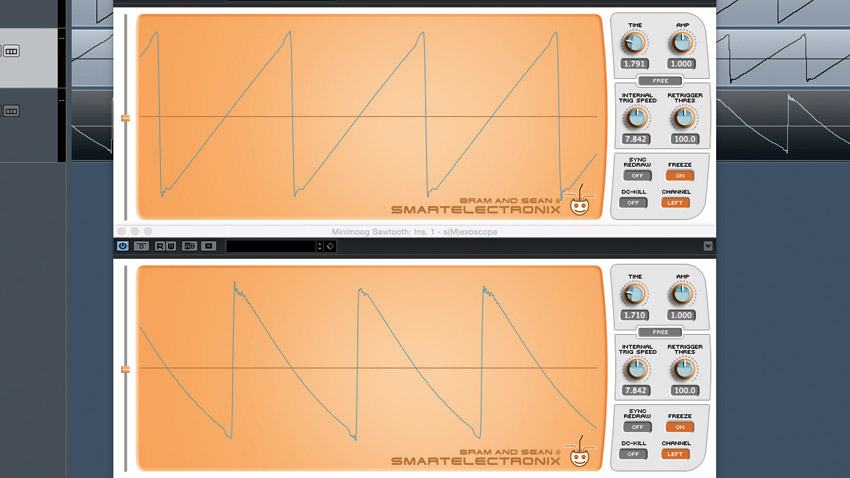
Step 3: Next, let’s take a look at the sawtooth wave generated by Moog’s venerable Minimoog Model D (a vintage unit, not the recent re-issue). In this case, we see that the polarity of the sawtooth wave is flipped, but that doesn’t matter in the audio range. What does matter is that it has even more pronounced imperfections than the 2600’s sawtooth wave, as can be seen here.
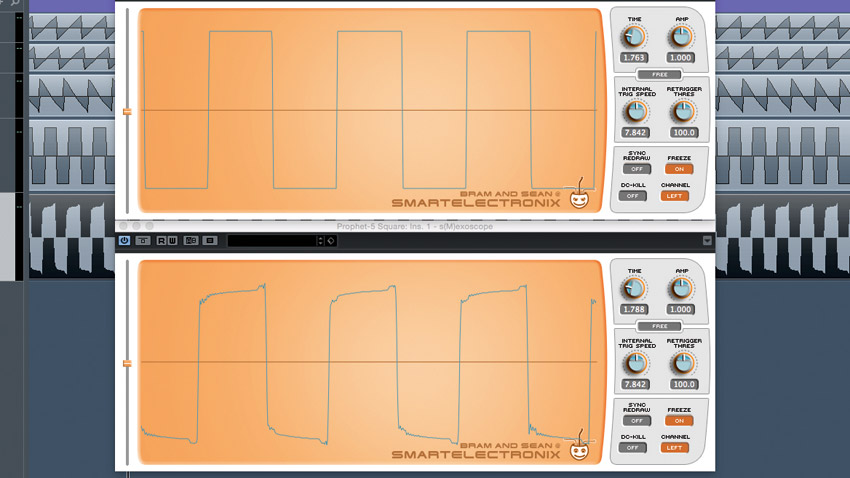
Step 4: Things start to get really interesting when comparing a software-generated square wave with one produced by a vintage analogue synthesiser. Here we’ve got a nearly perfect square wave from Audacity and another, quite imperfect square wave from a Prophet-5. Check out those spiky peaks! Believe it or not, the Prophet-5’s square wave is pretty good, for an analogue synth!
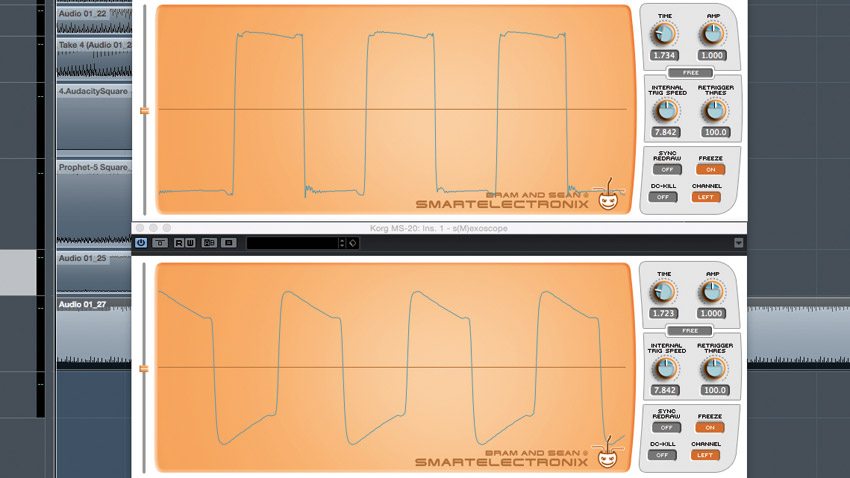
Step 5: Now let’s take a look at the square wave produced by that most cantankerous of synthesisers, the VCS 3 (top). Surprisingly, it looks pretty darned good - it isn’t a near-perfect specimen like that produced by Audacity, but it’ll give the Prophet-5 a run for its money, and it’s far truer than that produced by an original Korg MS-20, as seen in the bottom ’scope.
Want all the hottest music and gear news, reviews, deals, features and more, direct to your inbox? Sign up here.
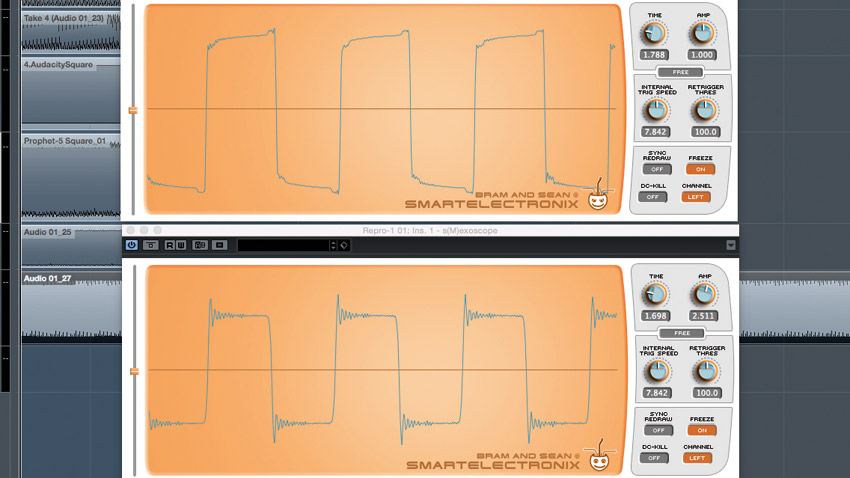
Step 6: Needless to say, a skilled developer doesn’t simply generate a mathematically perfect waveform and hope we don’t hear a difference. For example, u-he’s clone of Sequential Circuits’ Pro-One, Repro-1, offers up a square wave that shares many of the characteristics of those we’ve seen from vintage gear. That’s Repro-1 on the bottom ’scope, and the Prophet on the top.
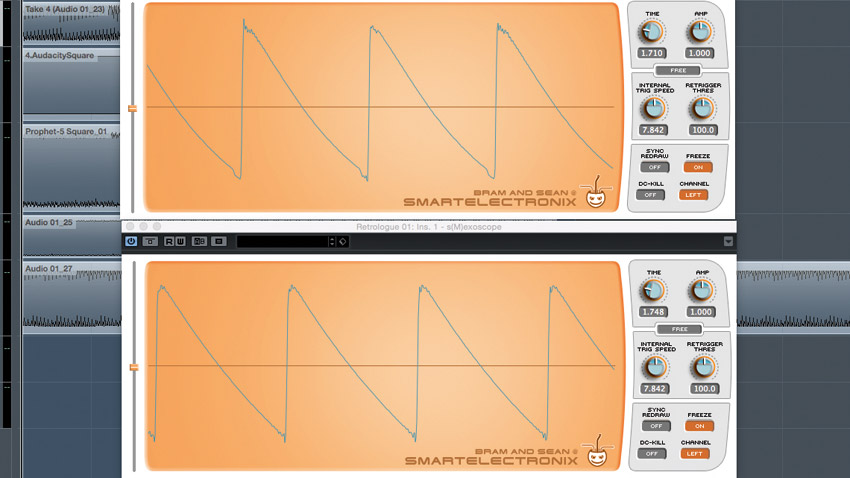
Step 7: Similarly, it’s clear that Steinberg did some homework in order to make their Retrologue synth as accurate as possible. Here, we see the sawtooth wave from our original Minimoog on the top ’scope, with the all-but-identical sawtooth from Retrologue displayed on the bottom scope. This is likely as close as one actual Minimoog is to another.
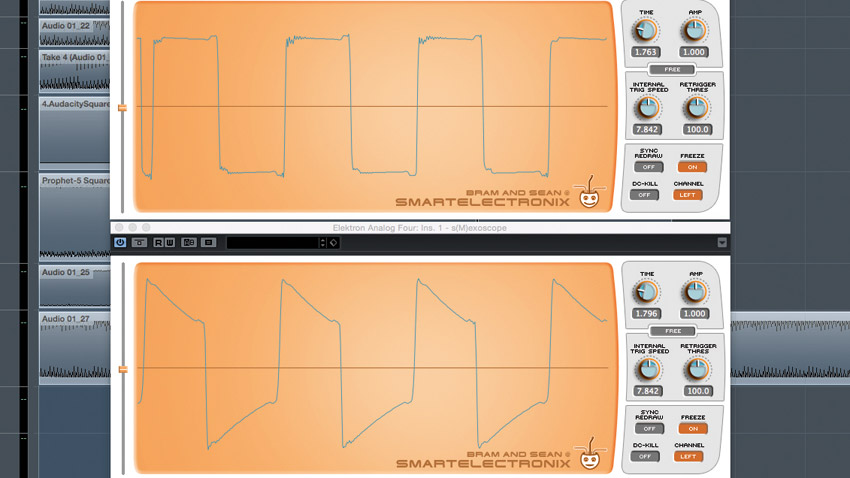
Step 8: Just for kicks, let’s take a look at some square waves from a couple of modern hardware analogue synths to see how they stack up. On top we have a specimen from a Synthesizers.com oscillator, and below, we’ve got a square wave from an Elektron Analog Four. Both exhibit the hallmarks of a well-designed analogue synthesiser with a bit of vintage flavour.
Want more synthy goodness? Get all our features, tutorials, tips and more at our Synth Week 2022 hub page.
Computer Music magazine is the world’s best selling publication dedicated solely to making great music with your Mac or PC computer. Each issue it brings its lucky readers the best in cutting-edge tutorials, need-to-know, expert software reviews and even all the tools you actually need to make great music today, courtesy of our legendary CM Plugin Suite.
